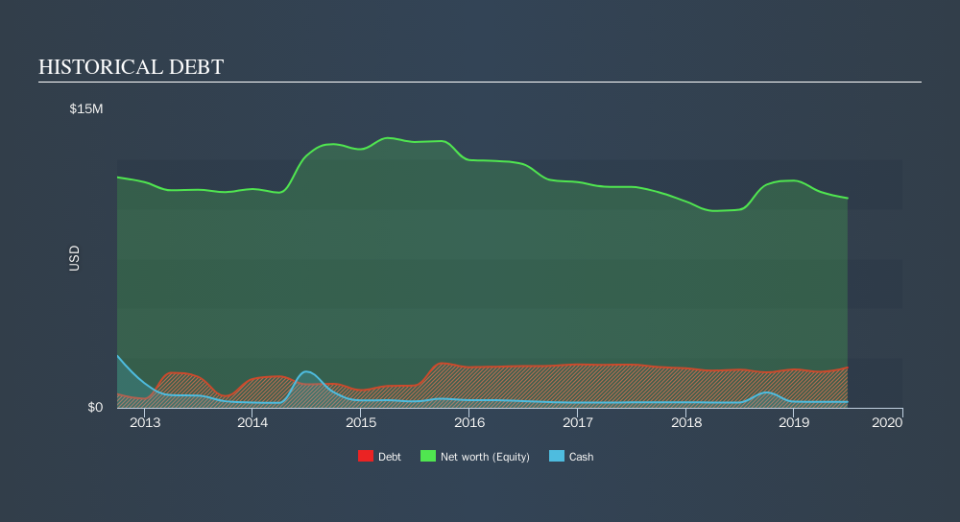We Think United States Antimony (NYSEMKT:UAMY) Has A Fair Chunk Of Debt

Some say volatility, rather than debt, is the best way to think about risk as an investor, but Warren Buffett famously said that 'Volatility is far from synonymous with risk.' When we think about how risky a company is, we always like to look at its use of debt, since debt overload can lead to ruin. As with many other companies United States Antimony Corporation (NYSEMKT:UAMY) makes use of debt. But the real question is whether this debt is making the company risky.
When Is Debt A Problem?
Debt is a tool to help businesses grow, but if a business is incapable of paying off its lenders, then it exists at their mercy. Ultimately, if the company can't fulfill its legal obligations to repay debt, shareholders could walk away with nothing. However, a more usual (but still expensive) situation is where a company must dilute shareholders at a cheap share price simply to get debt under control. Having said that, the most common situation is where a company manages its debt reasonably well - and to its own advantage. When we think about a company's use of debt, we first look at cash and debt together.
View our latest analysis for United States Antimony
What Is United States Antimony's Net Debt?
You can click the graphic below for the historical numbers, but it shows that as of June 2019 United States Antimony had US$2.02m of debt, an increase on US$1.91m, over one year. However, it does have US$299.3k in cash offsetting this, leading to net debt of about US$1.72m.
How Healthy Is United States Antimony's Balance Sheet?
According to the last reported balance sheet, United States Antimony had liabilities of US$4.18m due within 12 months, and liabilities of US$2.40m due beyond 12 months. Offsetting this, it had US$299.3k in cash and US$417.0k in receivables that were due within 12 months. So it has liabilities totalling US$5.86m more than its cash and near-term receivables, combined.
Given United States Antimony has a market capitalization of US$38.8m, it's hard to believe these liabilities pose much threat. But there are sufficient liabilities that we would certainly recommend shareholders continue to monitor the balance sheet, going forward. When analysing debt levels, the balance sheet is the obvious place to start. But you can't view debt in total isolation; since United States Antimony will need earnings to service that debt. So if you're keen to discover more about its earnings, it might be worth checking out this graph of its long term earnings trend.
In the last year United States Antimony actually shrunk its revenue by 4.1%, to US$9.1m. We would much prefer see growth.
Caveat Emptor
Over the last twelve months United States Antimony produced an earnings before interest and tax (EBIT) loss. Indeed, it lost US$2.2m at the EBIT level. Considering that alongside the liabilities mentioned above does not give us much confidence that company should be using so much debt. Quite frankly we think the balance sheet is far from match-fit, although it could be improved with time. However, it doesn't help that it burned through US$2.2m of cash over the last year. So suffice it to say we consider the stock very risky. For riskier companies like United States Antimony I always like to keep an eye on the long term profit and revenue trends. Fortunately, you can click to see our interactive graph of its profit, revenue, and operating cashflow.
If you're interested in investing in businesses that can grow profits without the burden of debt, then check out this free list of growing businesses that have net cash on the balance sheet.
We aim to bring you long-term focused research analysis driven by fundamental data. Note that our analysis may not factor in the latest price-sensitive company announcements or qualitative material.
If you spot an error that warrants correction, please contact the editor at editorial-team@simplywallst.com. This article by Simply Wall St is general in nature. It does not constitute a recommendation to buy or sell any stock, and does not take account of your objectives, or your financial situation. Simply Wall St has no position in the stocks mentioned. Thank you for reading.


